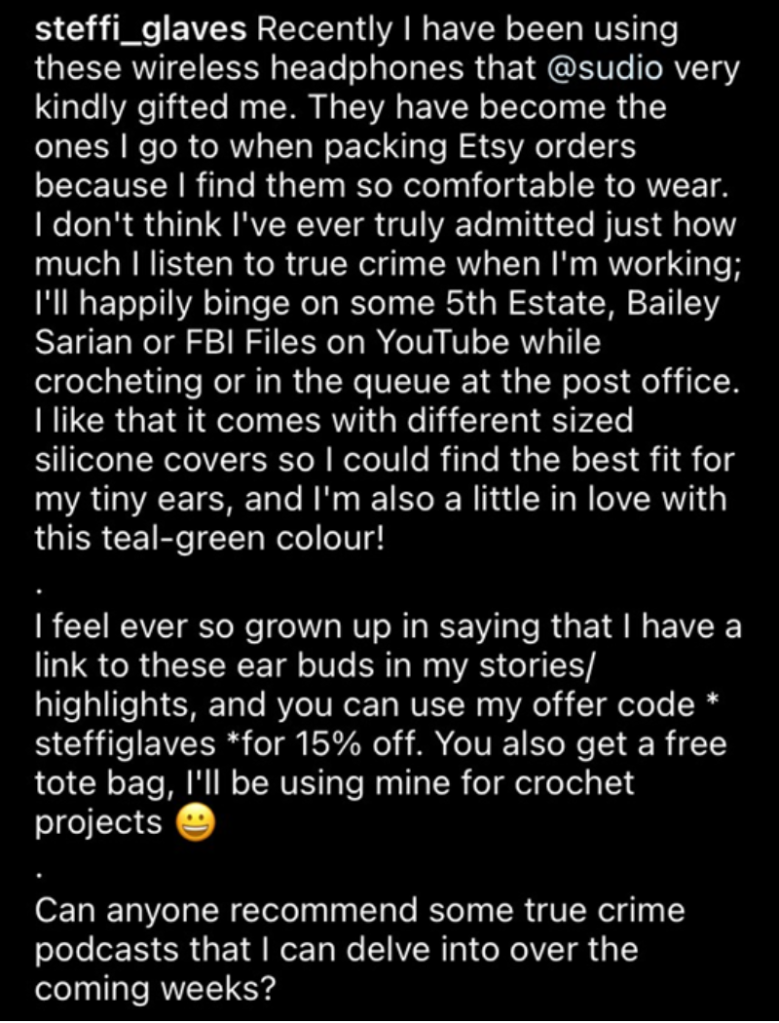Episode 24: Selling hard and soft
Manage episode 337675471 series 2754478
In this episode on ‘selling, hard and soft and everything in between’, we want to raise advertising literacy by showing and identifying how language and semiotics are used in marketing to influence people’s buying behaviour. In the introductory chat, it soon becomes obvious that advertising is everywhere in different shapes and forms and that all three hosts have succumbed to it: we even shamelessly do it on the podcast itself (can you spot all instances?) and we have to admit to having bought clothes, paintbrushes and ice-cream ourselves, fuelled by subtle and less subtle advertising.
In the introduction, Erika refers to Arran Stibbe’s work, in which he analyses the discourse in textbooks on economics:
- Stibbe, A. (2020). Ecolinguistics and economics: The power of language to build worlds. World Economics Association Commentaries, 10(3), 2-7. https://www.worldeconomicsassociation.org/newsletterarticles/ecolinguistics/
We then move on to elusive types of advertising, where the genre is bended and blended with others so it is harder to spot. Veronika starts with an example of so-called native advertising:
Later, Bernard mentions the study below about the phenomenon: Apostol, N.-E. (2020). What is known about native advertising in editorial contexts? A descriptive literature review. Journal of Media Research 37, 59-81.

Veronika also refers to product placement and illustrates how the appearance of the Ray-Ban Aviator sunglasses in the Tom Cruise blockbusters Top Gun and Maverick boosted sales (and US Navy applications).
In a similar vein, the Tom Hanks films Castaway and Forrest Gump had some not very subtle product placements:

We reference the following study, which showed that product placement is related to larger increases in online conversations on social media and more web traffic for the featured brand. The researchers also found that product placement proximity to advertising during a program can enhance the prominence of placements. Verbal placement apparently also works better than visual placement.
- Fossen, B. L., & Schweidel, D. A. (2019). Measuring the impact of product placement with brand-related social media conversations and website traffic. Marketing Science, 38(3), 481-499. DOI: 10.1287/mksc.2018.1147
Non-conventional and blended advertisements are often referred to with blended (or ‘portmanteau’) words as well: advertorials, infomercials, shopatainment. The last of these includes live sellers on video channels. A recent MA dissertation at Lancaster University addresses the phenomenon from a language point of view
- Tan, K. (2021). A corpus-based analysis on the language in Chinese livestream sales. MA dissertation, Lancaster University.
This case study of one live seller shows that, unsurprisingly, verbs and nouns closely related to purchase and discount are frequently used in livestream sales (‘buy’, ‘get’, ‘coupon’). In addition, live sellers use evaluative nouns (‘beauties’) and personal pronouns like ‘everybody’, ‘we’, etc. to address the customers. Repetitions or interactions with audiences can also be noticed. Hard and soft advertising strategies are applied in livestream sales together, to attract and persuade customers.
Sometimes sellers also simulate gaming with potential buyers:
Huang, D. (2019). A study on persuasive language in personal selling. International Journal English Linguistics, 9(2), 353-363. https://pdfs.semanticscholar.org/ac7c/6ae3d0d6215a04e173e1081fcf3c7f0e9f4f.pdf
In the run-down of advertising types, we also refer to basic distinctions that are often made, such as hard selling and soft selling (see title of this episode) and reason vs. tickle, which are also covered in Bernstein’s and Cook’s works:
- Bernstein, D. (1974). Creative Advertising. Longman.
- Cook, G. (ed.) (2008). The Language of Advertising (4 volumes). Routledge.
Bernard refers to the typical features of hard selling as the very recognizable aggressive tactics that centralise the product and its features and benefits, while playing on the scarcity principle and fear of missing out:

Veronika’s son, Feranmi Ayo Omoniyi, would like to be given full credit for all his research into hard-selling tactics in computer games – thank you!
Erika mentions that soft selling plays more on emotions, stories, atmosphere and associations, with the possessor reflecting the possessed. Here’s Natalie Portman’s gaze from the Dior ad that Bernard refers to:
Still in the introduction, we also mention Bhatia’s colony of promotional genres, which features both central and more peripheral members:

We then move on to the interview with Joe McVeigh, who is a PhD candidate at the University of Helsinki in Finland. You can also find him on Twitter: @EvilJoeMcVeigh (ignore the account handle, he is very nice!). We mention one of his publications during the interview (see here for more):
- McVeigh, J., (2018). Join us for this: Lexical bundles and repetition in email marketing texts. In Kopaczyk, J. & Tyrkkö, J. (eds) Applications of Pattern-driven Methods in Corpus Linguistics (pp. 213-250). Benjamins.
Out of curiosity, we repeated his Google search “What is a subject?” and are pleased to report that we got a sound first answer:


In the analysis we look at an example each that we brought. This is the influencer post that Bernard found.
The first feminist discussion of stereotypically feminine speech features was by Robin Lakoff: Lakoff, R. (1973). Language and woman’s place. Language in Society, 2(1), 45-79.
There is also an anniversary edition of her book of the same title: Lakoff, R. (2004). Language and Woman’s Place: Text and commentaries. Oxford University Press.
Erika’s examples are not for the squeamish:

And finally, Veronika contributes a tweet that was retweeted by the 2022 T.S. Eliot Prize for poetry winner Joelle Taylor. (Her book C+nto is a poetic exploration of recent queer history)

Listen to the episode here
Full transcription of the episode
14 епізодів






